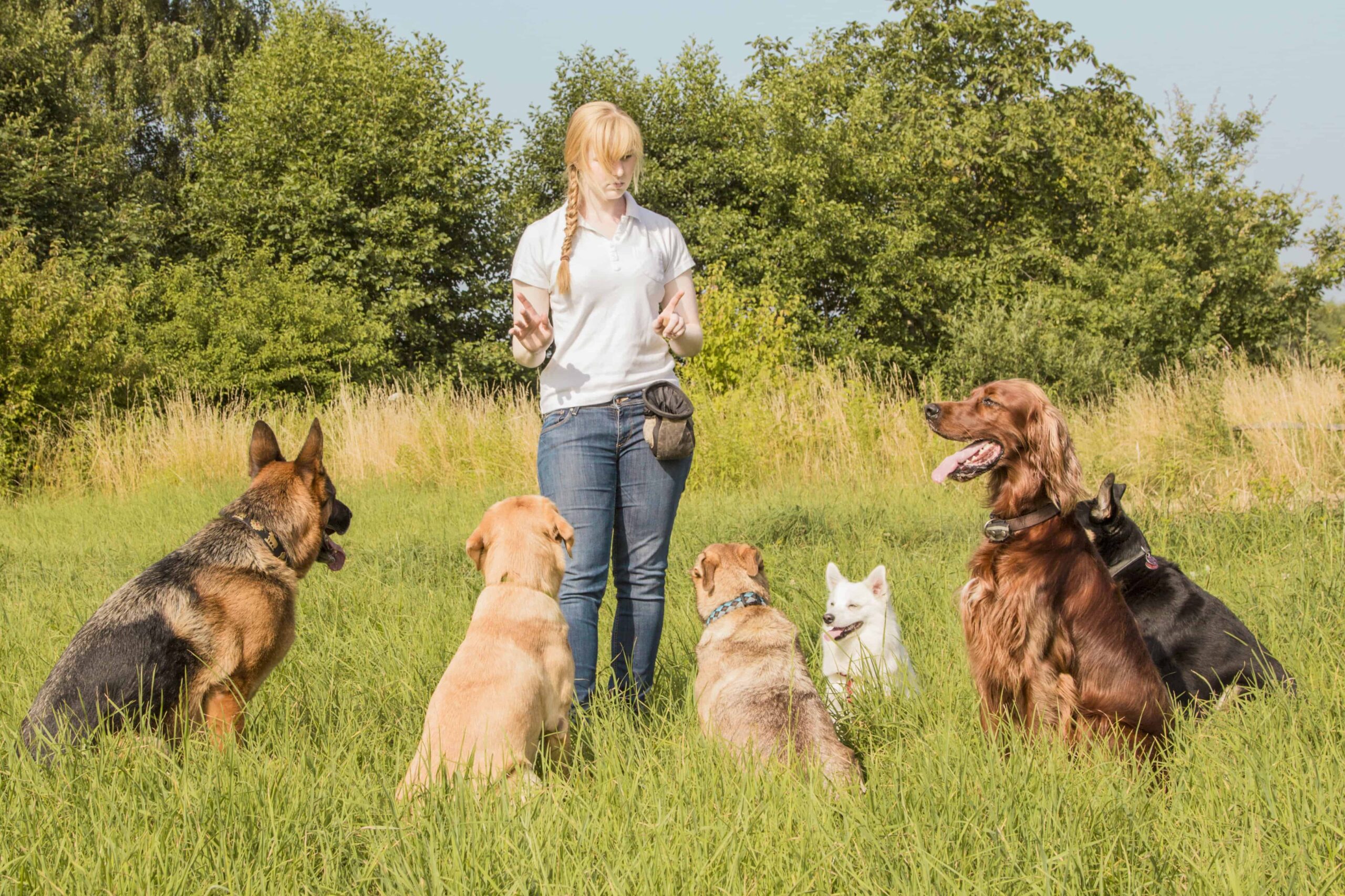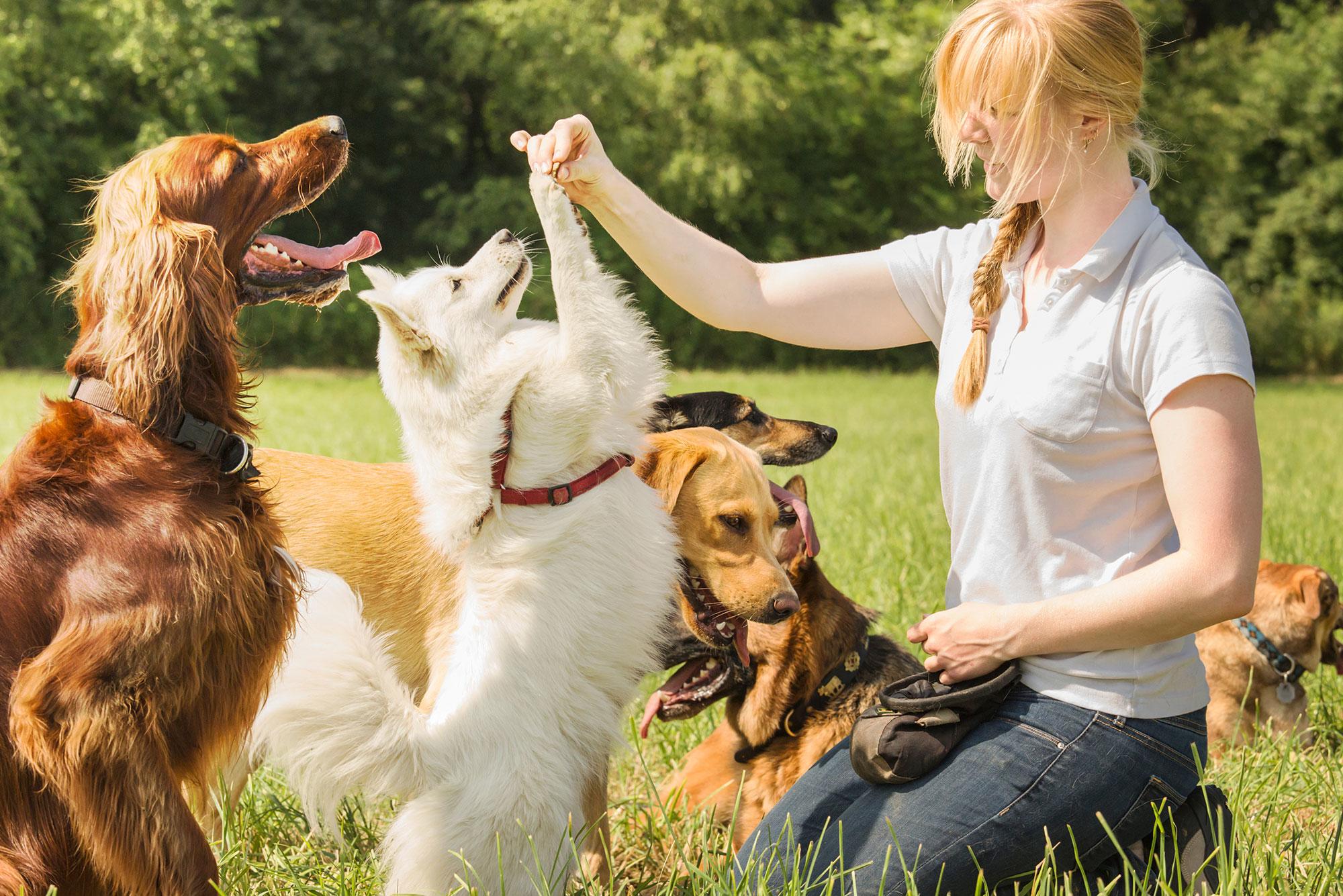Newbie's Guide to Effective Pet Training in your home
Effectively training a dog at home requires a nuanced understanding of canine actions and efficient interaction strategies. Developing clear training objectives, utilizing top quality benefits, and maintaining uniformity throughout household participants are crucial components. Integrating training right into daily regimens can enhance both interaction and retention.
Comprehending Canine Habits
Comprehending pet dog actions is essential for efficient training and promoting a harmonious connection between human beings and their canine companions. Dogs interact mainly with body language, vocalizations, and facial expressions, making it important for proprietors to analyze these signals properly. Acknowledging actions such as tail wagging, growling, or cring can provide insights right into a dog's emotion and intents.

Common behavioral concerns, such as hostility, anxiety, or too much barking, commonly stem from misunderstandings or unmet needs. Observing and attending to these concerns quickly can protect against acceleration and make sure a favorable training experience. By fostering a deep understanding of canine habits, proprietors can customize their training techniques to suit their canine friends, inevitably leading to a satisfied and well-behaved family pet.
Vital Training Tools
A well-equipped training space can considerably improve the effectiveness of dog training at home. Important training devices guarantee that both the pet dog and the trainer can take part in efficient sessions that promote discovering and bonding.

Purchasing a durable leash and a comfy, well-fitting collar or harness is important for safety and control. These devices aid develop limits and ensure the canine remains safe and secure during training. Furthermore, a designated training location, devoid of disturbances, help concentration for both the pet and the instructor.
Educating aids such as training pads, cones, or dexterity equipment can also boost the experience by presenting selection and obstacles. Having a note pad or electronic app for tracking progress can be important, enabling you to keep in mind successes and locations for renovation. Making use of these crucial tools will certainly create a positive training environment and lay the foundation for efficient understanding.
Creating an Educating Routine
Establishing a constant training routine is necessary for efficient pet training in the house. A well-structured regular not just helps in enhancing wanted actions yet likewise offers your pet with a sense of protection and predictability. To create Resources an effective training regular, start by determining details training goals, such as standard commands, leash strolling, or housebreaking.
Choose an assigned time every day for training sessions, preferably when your pet is responsive and sharp. Sessions must be short, roughly 5 to 15 mins, to keep emphasis and stop fatigue. Consistency in timing and atmosphere will certainly boost your pet's understanding experience.
Integrate training into everyday tasks to strengthen skills. Technique commands throughout walks or mealtime, which integrates discovering right into all-natural regimens. In addition, stay versatile and readjust the routine as needed, suiting your pet's power levels and mood.
Positive Reinforcement Techniques
Positive support strategies are fundamental to reliable dog training, advertising desired behaviors with rewards instead than punishment. This approach makes use of favorable stimulations, such as treats, appreciation, or play, to urge pet dogs to repeat Go Here particular actions. The cornerstone of this strategy is timing; incentives must be given instantly complying with the preferred actions to develop a clear association.
When applying positive reinforcement, it is important to choose rewards that are motivating for your pet. High-value treats, such as small pieces of hen or cheese, can be especially effective during training sessions. In addition, varying the incentives can maintain your pet's passion and enthusiasm.
Start with easy commands, like "sit" or "remain," and slowly progression to more intricate tasks. Uniformity is essential; make certain that all member of the family make use of the same commands and incentive systems to prevent confusion.
In addition, it is important to continue to be patient and stay clear of irritation. Canines, like people, learn at official statement their own rate. By promoting a supportive training atmosphere with favorable reinforcement, you can improve your canine's discovering experience while enhancing the bond in between you and your fuzzy friend, laying the foundation for successful training end results.
Usual Training Challenges
While training a canine in your home can be a fulfilling experience, it commonly features a collection of common challenges that can check both patience and consistency. One widespread issue is disturbance. Pets might end up being easily averted by sounds, movements, or also aromas in their environment, making it difficult to keep their focus during training sessions.
An additional difficulty is disparity in commands and reinforcement. It can impede and puzzle the pet progression if family participants utilize various hints or incentives. Establishing a unified strategy is essential for effective communication.
Additionally, pets can experience irritation or tension, specifically if they do not understand what is expected of them. This can result in unwanted habits, such as barking or eating.
Finally, the timing of reinforcement is critical (Dog training). Postponed benefits can diminish the efficiency of favorable reinforcement, as canines may fall short to attach the behavior with the reward
Overcoming these difficulties requires dedication, clear communication, and a structured training strategy. Recognizing and dealing with these typical challenges will certainly lead the way for an extra enjoyable and successful training experience in the house.
Verdict
Finally, effective canine training at home necessitates an extensive understanding of canine behavior and reliable communication methods. By developing clear training goals and utilizing top quality treats along with favorable reinforcement, the training procedure comes to be a lot more fulfilling for both the dog and the instructor. Persistence, adaptability, and consistency are essential parts that help with learning. Inevitably, integrating training into day-to-day regimens enhances the bond between pet and proprietor, making the experience both satisfying and productive.
Establishing a regular training routine is vital for reliable pet training at home.Positive support methods are fundamental to reliable canine training, promoting wanted actions via incentives instead than punishment (Dog training). By cultivating an encouraging training setting through positive support, you can boost your pet dog's knowing experience while enhancing the bond in between you and your furry companion, laying the groundwork for effective training end results
In conclusion, effective pet dog training at home requires an extensive understanding of canine actions and effective communication techniques. By establishing clear training goals and utilizing premium deals with together with positive support, the training procedure comes to be extra fulfilling for both the canine and the trainer.